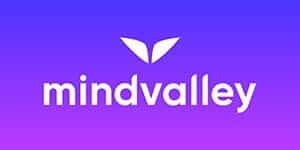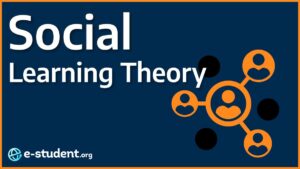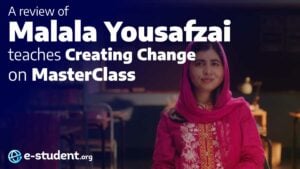Language and speech are at the center of human existence; while other animals, of course, can communicate, no other species has the same ability to communicate verbally with each other. And we can do more than just relate basic facts to each other – we can express complex ideas and notions that help us bring our culture forward. But not all speech is created equal, and many – myself included – struggle at times to get points across, whether it is in one-on-one interactions or public speaking.
So I was instantly interested when I was asked to review one of the courses (or “quests”) on Mindvalley dealing with effective speech. In this review, I’ll be looking at “Speak and Inspire,” delivered by Lisa Nichols, a 31-day journey to help you master speaking and communication. Read on for a detailed breakdown of the course’s content, actionable takeaways, and an honest evaluation of its impact on the journey to becoming better at communication.
Table of Contents
The course and the instructor
The “Speak and Inspire” course is “everything you need to become a masterful speaker and communicator.” Sounds promising. It lasts 31 days, and it is divided into four parts:
- Mastering the power of your voice and message
- Defining your listener’s experience
- Muscle developed through action
- Speaking to 1 or 1000
Lisa Nichols is an international motivational speaker, best-selling author, founder and CEO of Motivating the Masses, award winner, and philanthropist. Widely regarded as one of the top transformational coaches in the world, she is a woman with an impressive transformational life story of her own.
With that, let’s dive into the quest!
Preparatory material
Before starting the first week, Lisa Nichols starts the course with a helpful set of preparation videos that provide orientation. These offer clear instructions to help you get ready mentally and emotionally.
Lisa explains that this is an action-based course; it’s not just about watching a few videos but diving in with your whole heart. And by doing so, you might just come out of this course as a changed person, in a good way!
The key is self-work! This is at the heart of the course. If you want to get the most out of it, you’ve got to be willing to put in some effort on your own, or as Lisa says, “put some skin in.”
The course provides the tools, but you’ve got to use them!

To help us throughout the journey, the Workbook is available to download. It’s almost like a travel journal with a map at the beginning. It’s where the real magic happens because it helps you apply what you’re learning in the course to your own life.
One part of the workbook is a pre-assessment of speaking and communication skills, which helps you see where you’re starting from, as well as set a benchmark so you can later evaluate which areas you’ve developed as a result of participating in this quest. The post-assessment is at the end of the course. It’s like a before-and-after picture of your personal growth.
We get more information about how we learn, breaking it down into three parts: getting information, integrating it into your life, and practicing what you’ve learned.
Finally, you get introduced to your “Tribe” – the community of fellow Mindvalley learners in the course. Whenever you need a boost of motivation or some encouragement, your Tribe is there in the course community to help you along the way.
In preparation for the quest, you also get a bonus meditation to help you get motivated.

Week 1 – Finding your voice
Week 1 focuses on finding our voice and understanding the power it holds in our lives. It encourages us to explore what is truly important to us and take more responsibility for our words and how they impact others. A key point is that it’s not just the words themselves but how they are delivered that truly matters. This distinction emphasizes the importance of effective communication and its role in conveying messages with impact.
The question to be asked is – “What do I want my audience to think, feel, or do as a result of my speaking?”

Throughout this week’s video and the course, Lisa shares her own experiences. Her transparency in discussing her journey underscores the importance of authenticity and openness in communication, which she calls the “gift of transparency.” This concept aligns with a dialogic approach, emphasizing the value of meaningful dialogue and connection in effective communication.

Week 2 - Touching the hearts of your audience
In the second week of Speak and Inspire, the focus shifts to the art of truly connecting with an audience. A central theme that emerges is the understanding that being a good speaker begins with your mindset. It’s not just about mastering techniques; it’s about cultivating the right mental approach. It’s about the audience’s perspective first, asking the question, “What does the win look like for my listener?”

One standout concept in this week is the distinction of “care-frontation,” which is different from “confrontation.” Lisa’s enthusiasm for this topic is obvious, and the energy she brings to it is evident. Care-frontation implies a compassionate and empathetic approach to addressing challenging issues, which can lead to more productive and meaningful conversations. Consistency in communication is another key point emphasized, highlighting the importance of aligning words with actions to build trust and credibility.
She says, “Knowing what a speed bump, stop sign, and wall is is crucial for sustaining a healthy relationship.”
We also get more information on the four types of speakers: the informational speaker, the motivational speaker, the inspirational speaker, and the transformational speaker. Each type has its unique qualities and purposes, and learners are encouraged to reflect on which category aligns with their current style and which one they aspire to become. The “inspiration always fits” phrase reminds us of the universal power of connecting through genuine and impactful communication.
Here, we also learn more about creating a safe environment for effective communication. We are introduced to the three pillars and agreements essential in establishing a safe space for open dialogue.
The three pillars that underpin a safe space involve:
- A willingness to be authentic and transparent.
- Words that engage in a dialogue with others.
- The use of “we” and “us” when speaking.
In addition to the pillars, “3 agreements” must be upheld within a safe space: no judgment, no repercussions, and unconditional love for each other.
Week 3 - Engaging your audience
Week 3 is all about engaging our audience. I found this week’s content to be both enlightening and challenging. Here, Lisa Nichols introduces us to several techniques for effectively engaging our audience through active listening – one is the importance of announcing to your audience that their participation will be a dynamic and interactive experience. This sets the stage for active engagement and helps connect the speaker and the audience. It’s a powerful reminder that speaking is not just about delivering a monologue but fostering a two-way communication channel.
One of the key actions for this week’s self-work is to start preparing to host an event so we can deliver an inspirational speech, as it encourages us to apply what they’ve learned so far – in a real-world context. However, there are no specific guidelines for organizing an event. Still, the emphasis here is primarily on the perspective of an individual who will take the stage in that event. The question from the beginning of the quest, “Who is my audience, and what do I want them to think, feel, and do as a result of my talking?” can serve as a guiding light in crafting this event and tailoring a message to achieve your desired impact.
“You do not need to get louder and more assertive to grab the audience’s attention. There are many other ways to emphasize and highlight parts of your message. You can pace your words with rhythm, say it assertively, or lower your voice to speak in a faint whisper. Find what works for you”.
Besides her personal experiences, Lisa also shares tips she uses in her communication (e.g., rhythm, pace).
We also get insight into two very strong techniques for connection with our audience:
1. Verbal highlights technique – includes slowing down the pace, lowering the voice and speaking with more assertiveness and almost in a faint whisper, and intensifying your speech with spikes in your voice.

2. Valley technique –starting with the BIG you by celebrating yourself and your impressive accomplishments and then going into your valley, an all-time low point in your life, and then sharing the lessons learned from your valley and why you are so passionate about doing what you do – your WHY.

Week 4 - Advanced techniques for remarkable speaking
Week 4 unveils some more advanced techniques for remarkable speaking, underscoring the significance of various aspects:
- Pregnant Pause: a natural breathing pause that is a strategic tool for emphasizing key points in your speech.
- Cadence and Rhythm: Nichols highlights the importance of cadence and rhythm in effective communication, emphasizing the musicality of speech.
- Full Body Communication: She reminds us that communication is not limited to words but is a full-body endeavor, a full-body sport.
- Feedback: Feedback is emphasized as essential for enhancing one’s communication skills.
- Listening Skills: Effective communication is intrinsically tied to active listening, and Nichols emphasizes the need to become a master enroller, highlighting the symbiotic relationship between speaking and listening.
- Storytelling Techniques: with outlines of how to paint a vivid image in our audience’s heads when we show a story, sharing what we were thinking during key moments in our story, and expressing our emotions.
Week 5 – Going further
The final week of the course focuses on staying authentic and true to one’s beliefs and values, even when success is achieved. Lisa Nichols emphasizes the importance of always being comfortable in one’s truth, highlighting the need to share one’s message with the world.
Learners are encouraged to choose five different modalities to convey their message. This includes committing to share the message in various ways over the next six months and seeking support from our Tribe.
This wrap-up, with a hidden gem in the videos, serves as a reminder that, in effective communication and public speaking, maintaining authenticity and consistently sharing one’s message with the world are integral aspects of the process.
Overall impressions
The goal of the “Speak and Inspire” quest by Lisa Nichols is to provide learners with the tools, techniques, and foundational knowledge required to speak, not merely to impress but to inspire.
I found myself drawn to specific factors and techniques that resonated with my needs and goals, and they are more represented in this review, recognizing that these aspects may vary from one individual to another.
Every video in the course has many motivational messages, hands-on practical knowledge, things you can do yourself to hone your skills, and a gentle push to connect with your Tribe. Lisa Nichols consistently reinforces the notion of your uniqueness and unwavering support and love during the learning process.
Following are also some of the things I thought were good and some that could be better.
Strong points:
- Comprehensive coverage of topics relevant to impactful speeches as well as everyday conversations
- Lisa’s authenticity and warmth
- Focus on techniques applicable to 1 person, 100, or an audience of 1000
- Abundance of motivational messages throughout the course that can, especially when combined with self-work, serve as reminders for personal growth and communication improvement
- Emphasizing safety in communication and highlighting that everyone is unique in their own greatness
- “Hidden gems” at the beginning of the course and at the end, connecting the power of words with music
Aspects that could be improved:
- The design of the workbook could be better (for example, by following the same design language as the excellent video material)
- Including exercises demonstrating conversations or care/confrontations in pairs for practical understanding
- Incorporating discussions or reflections on intercultural communication to address differences in communication styles across cultures
- While the videos are replayable and offer valuable content, some additional practical demonstrations of the exercises presented could enhance the learning experience
How can you access the quest?
You can access this quest through a Mindvalley membership, which costs $99 per month or $499 for a year. Apart from this quest, membership also gives you access to almost all other quests on Mindvalley – many of which are great complements to this one.
Importantly, if you are unsure whether the program is worth it for you, Mindvalley membership comes with a no-questions-asked trial period of 15 days so you can try out the program with no financial risk.
Concluding recommendations
Overall, I found the course to be highly useful to improve my spoken communication.
The awareness of my communication struggles motivated me to explore ways to improve, and this drive for personal growth led me to complete the quest, even if I didn’t feel comfortable doing all the exercises. But importantly, mastering speech is not something that can be done in a month – my journey has begun, but it has not yet ended.
If you embark on this journey and commit to the necessary self-work, rest assured that tangible benefits await you. The Speak and Inspire quest on Mindvalley provides a valuable toolkit for enhancing your communication abilities, but it ultimately depends on your dedication and effort to reap the rewards. The journey toward self-improvement is challenging and immensely rewarding, offering the promise of enhanced personal and professional connections and realizing your full potential as a master speaker.
Black Friday Special – get 40% off your Mindvalley Membership to get access to 100+ personal growth programs. Note that the discount is applied to the lifetime of your account – not just your first payment.




